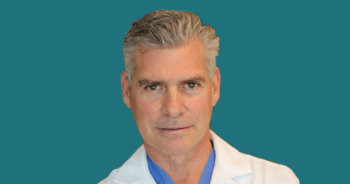
CAR T Therapy Promise in Relapsed Diffuse Large B-Cell Lymphoma: Jason Westin, MD
The director of Lymphoma Clinical Research at the University of Texas MD Anderson Cancer Center, discussed the future of DLBCL treatment.
This content originally appeared on our sister site,
Targeted Oncology spoke with Jason Westin, MD, director, Lymphoma Clinical Research, and section chief, Aggressive Lymphoma, and assistant professor, Department of Lymphoma/Myeloma, Division of Cancer Medicine, at the University of Texas MD Anderson Cancer Center, to learn more about the future of diffuse large B-cell lymphoma (DLBCL) treatment.
Westin discussed the standard of care for DLBCL, which hasn’t changed much in the last 20 years. Current clinical trials are aiming to improve the frontline space, but most of the innovation is happening in the relapsed setting. Treatment with chimeric antigen receptor (CAR) T-cell therapy is showing promise in patients who relapse after rituximab (Rituxan) cyclophosphamide, doxorubicin, vincristine sulfate, and prednisone (R-CHOP).
Westin says that in the studies he has be involved with that have used targeted therapy combinations prior to chemotherapy, high response rates have been seen. According to Westin, this may show targeted treatments may work better in newly-diagnosed patients.
TRANSCRIPT:
0:08 | Well, I'd love to say things will be dramatically different. But we could have said that at any point over the last 20 years and would have been wrong. There are multiple ongoing studies looking at ways to improve the frontline setting. But innovation is more likely in the relapse space, which then filters up to the frontline space. And I think that the CAR T-cell studies showing potential advantages in the second line will change the landscape for patients who have relapsed after R-CHOP in the next 5 to 10 years to favor using CAR T-cell therapy. I think based on having that better cure fraction in the relapse space, more innovation may be possible in the frontline space. And so therefore doing studies that are not handcuffed to the 1970s chemotherapy for fear of not giving a patient the old curative therapy and missing a potential window for cure, I think that will allow us to do more innovative studies. I've done a handful of clinical trials using targeted therapy combinations prior to chemotherapy. And what we've shown in those studies is the response rates are very high. And patients tolerate it very well. And so that's still on a clinical trial stage. But it does show the potential that these targeted treatments can work better in newly diagnosed patients and potentially forego the need for chemotherapy.
Newsletter
Stay at the forefront of cutting-edge science with CGT—your direct line to expert insights, breakthrough data, and real-time coverage of the latest advancements in cell and gene therapy.











































